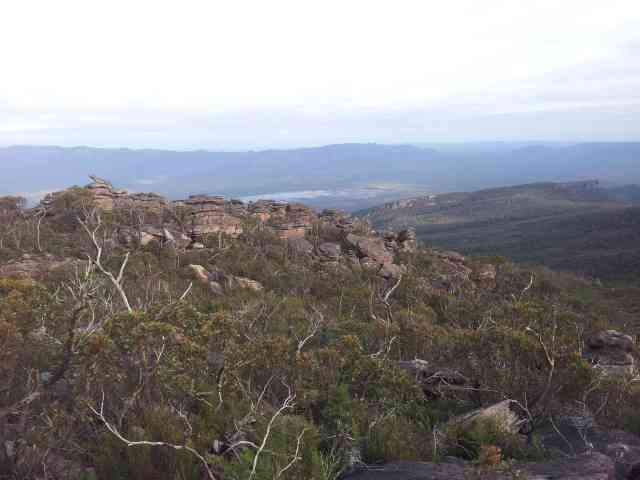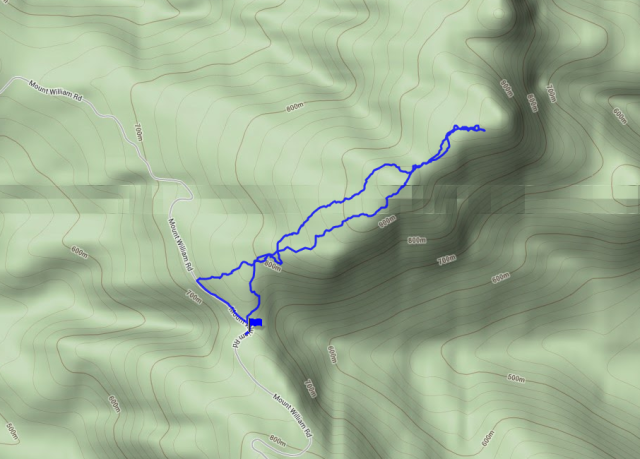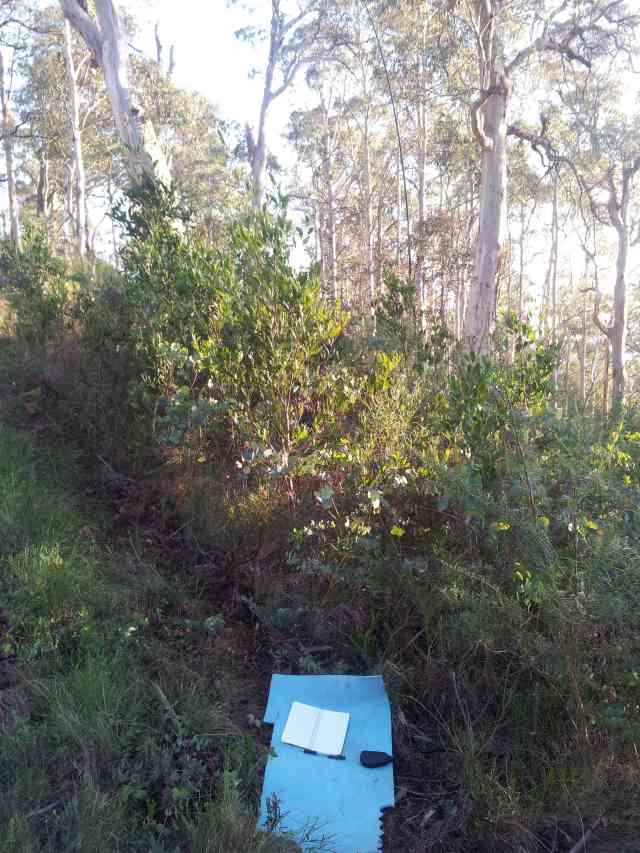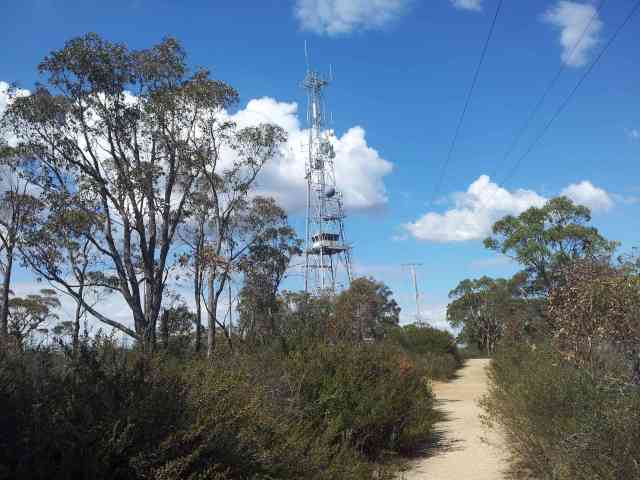Hi all,
After being around Ballarat for Easter, I managed to slip away for a 2 day trip on ANZAC day and Saturday following. A chance for some solid walking for a few summits.
VK3/VT-018
I drove up Thursday night from Melbourne through Dargo and stopped the car about 400m from the summit and there slept the night. The following morning, it was walk down the road to get out of the activation zone and make my way up to near the highest point. The road itself (Dargo High Plains Rd) actually enters the activation zone, so this is one of the easier summits around.
My battle equipment for these sets of activations was the “random” wire, the KX1, the 7m squid pole and LiPOs to give me 12V: starting at 12.6V and never really gets much below 12.3V even over many activations! The LiPOs are 3 packs of 3S 2200mAh. I could get away with just one and that would be plenty, but I would like to use these three together over their life. They must be over 100 cycles by now, they have seen a lot of action. The boss approved use for these LiPOs was for powering an electric lantern, but I also had an eye on “dual use technology”.
Most contacts were on 40, but I managed to also get AX2UH on 30 and AX5CZ on 20. I was looking forward to using the AX call, if nothing else to have a bit of variety on the CQ morse key calling. Could I control myself in sending “AX” rather than “VK”? Would the strange callsigns throw me on RX? Turned out not to be much of a problem, but it is always good to keep the practice up.
Near Mt Freezeout VK3/VE-024
There had been some debate about whether this summit, or Mt Freezeout itself deserved the SOTA reference. The maps suggest that this peak is higher, and now having been there, I continue to agree. Access is reasonably straightforward from the Dargo High Plains Rd. Just to the south of Mt Freezeout is a bit of a campsite. It’s hard to miss to the east of the road. From here, head up Mt Freezeout, and it is best to go to the summit, rather than contour around. From the summit, head east towards the saddle with VK3/VE-024 and head up.
It is a bit stark with all the dead snowgums from the 2003 fires. There had been some recent fire activity which further set back the regrowth. The views are nice however:
I took the 7m squid pole, figuring that the bush bash would be very mild, which it was. Sometimes it gets caught in the burnt branches of the snow gums. I think that the 7m pole gives some marginal DX benefit over the 4.7m pole on the random wire (a little less cloud warming), but I’ve pretty much come to the view that if there is any serious off track walking now, that the 7m pole can either stay at home or in the car.
Here’s the antenna and pole at the summit:
I worked backwards for this activation, 20 first, then 30 and 40. Picked up Peter VK3PF on a s2s on 20. It would have been direct wave, because he was less than 50km way.
The KX1 has a s meter, but I don’t use it. What it does do is present received signals with a slightly dampened AGC, so differences in strength can be heard. AGC is still present in the radio – There is a 48dB difference in strength from S1 to S9. A radio like the FT-817 has AGC action that completely removes any audio volume difference between an S5 signal (reported by the FT-817 as below S1 – a SOTA activator could be deceived to report this as a *cough* strong 509 signal) and a S9 signal. On the KX1, S6 signals are about the same volume as my sidetone setting. S9 is starting to blast my ears – although I’ve changed earbuds recently which have improved things. Below S3, I have to turn the volume up to better hear the other station, but turn it down on TX so the side tone is not too loud.
After finishing up, it was on to the two last summits of the day, with significant walking planned.
Mt Blue Rag VK3/VE-021
The 4wd track was beyond the Prius – I didn’t try – but I reckon I could have given it a shake in the Camry. I walked up to the top of the main track and then found side tracks heading along towards the summit itself. A small amount of height is lost, then it climbs towards the summit. It was nice to get away from the noise of the 4wds to activate.
I went back to 40 metres to start this activation, driven by the prospect of a summit to summit with Nick VK3ANL. Using a CW only rig (although can receive SSB), I have to be a little selective about which other SOTA activators I try for a s2s, some get thrown by someone using CW on 7.09 I’ve long come to the conclusion that using the KX1 is not going to help me do well on the SOTA summit to summit score tables, but it’s down on my list of SOTA priorities. I have genuinely enjoyed activating mostly CW only since I became a Mountain Goat last November.
Blue Rag Range VK3/VE-015
When the time comes to turn over the Camry, I am going to get at least a soft roader. It will open more SOTA summits to me, but at the moment, I can still get these summits in reasonable time by walking. Good for the fitness and keeps the weight under control. Also keeps me in shape for the SOTA summit that no car can get anywhere near. It is hard work, however walking up and down the knobs and knolls sometimes on fire trails. Also get a few strange looks from 4wd drivers as they go past in their 10 car convoys.
By the way, I would have never attempted to take the Camry down this road, I would have at least wanted a soft roader. Maybe more than a soft roader – although with the right technique, soft roaders can go lots of places. I’ve got my Camry, and even the Prius into places they shouldn’t be able to go.
Before getting started at the summit, it was time to take a few pics. It was nice looking south towards Mt Kent and the upper reaches of the Moroka river:
I started on 20, and it’s nice when the bands are open to get a decent pile up from EU and W. Those EU operators are keen. Generally VK operators are quite polite and try to go one at a time. Here it’s trying to separate two stations zero-beating each other with the same strength. I wait for one of them to stop and note the few characters of the call of the station still sending, send these and hope only they then respond – which happens most of the time. What I do try to do is never reward naughty behaviour. If someone is calling out of turn or calling before I send QRZ or whatever, I try to work them either last or only after they work with what I am doing. It is easier to use the RIT and the adjustable filter on the KX1 to effectively ignore QRM (a bit harder on the FT-817, where there is either the wide 2.3kHz filter, or a 500Hz filter – not a variable potentiometer driven filter). On the subject of sending QRZ at the end of a QSO, I find it works wonders for imposing some discipline on pileups. In all truth, I could get away not doing it on VK stations, but given it’s an essential pileup management tool for EU pileups, I am now doing it all the time.
With that, it was time to head back to the car – about a 2 1/2 hour walk. It was dark about half way along, but that’s the plan to try and get as much activating in on these days as I can.
Regards, Wayne VK3WAM






































You must be logged in to post a comment.